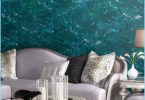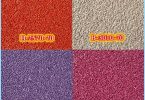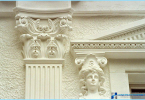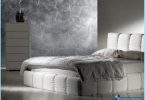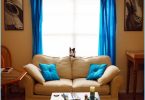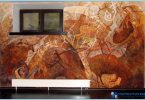The contents
- The use of textured finishes when decorating the kitchen
- The advantages of textured plaster
- The choice of textured plaster
- What tools are needed for textured mixture
- The variety of the surfaces created decorative plaster
Textured plaster allows you to fully realize creative ideas to the surface with its original appearance. When the decorative finishing of walls using modern materials, you can get in any residential indoor: bathroom, corridor, kitchen, room, textured surface of the desired color.
All work associated with textured plaster, even for beginners, you can save significant financial resources.
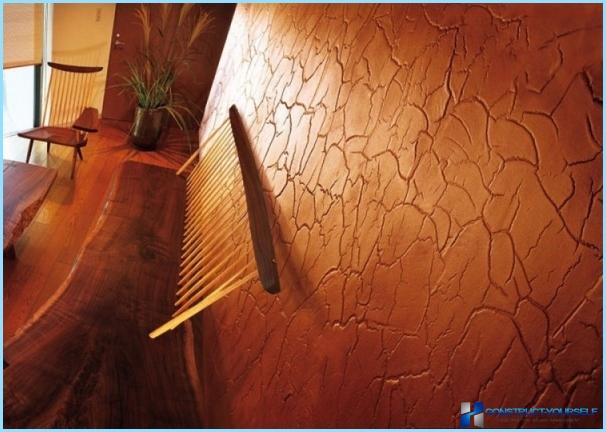
The use of textured finishes when decorating the kitchen ↑
For kitchen fit the billing of two types: mineral and synthetic. The difference is in the substance used as a binder component.
Synthetically mixtures contain acrylic, styrene, mineral gypsum, cement, lime. In the decorative plaster contains various fillers: quartz, marble, chips of granite. Before applying, perform a preliminary preparation of the surface:
- alignment;
- purification;
- drying.
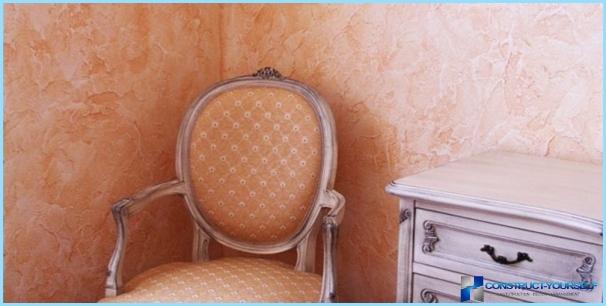
The advantages of textured plaster ↑
The advantages of textured plaster are:
- Simplicity and ease of use. Quality textured plaster vgt easily applied to the surface. You do not need to obtain a smooth structure, on the contrary, for full disclosure of the billing material, motion should be chaotic, uneven strokes. The compound has high adhesion, so it is suitable for all types of surfaces.
- A variety of designs. Have textured plaster there are many opportunities for good design. The grit material, as well as a wide color range, low price, this putty is made essential for the designers.
- high durability. Exterior finish suitable for decorating spaces with high humidity. It does not change its color with the increase of humidity in the room.
- insignificant value ensures the use of such fillers in a residential area.
- the environmental characteristics. Textured plaster is not detrimental to human health, has excellent breathability, allows you to create a positive room climate.
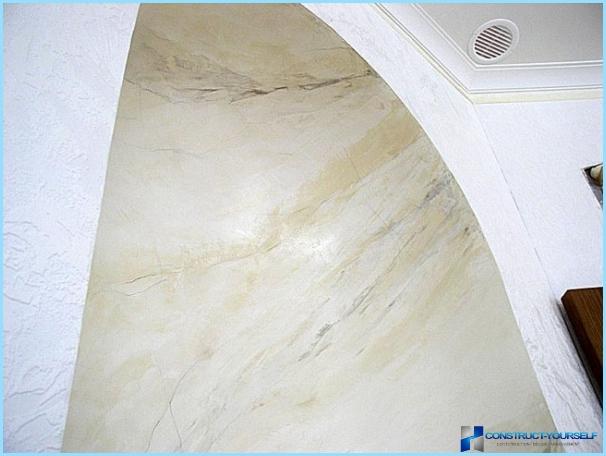
The choice of textured plaster ↑
Buying textured plaster mix, it is advisable to proceed from the following parameters:
- Decorative characteristics. Depending on what decorative effect you want to obtain, pick a kind of plaster.
- The price of the mixture.
Learn all the technical parameters of mixtures. Many manufacturers on their Internet sites describe in detail the key performance characteristics of sold plaster composition, do not neglect the opportunity to get to know this important information, it will help you make the right choice.
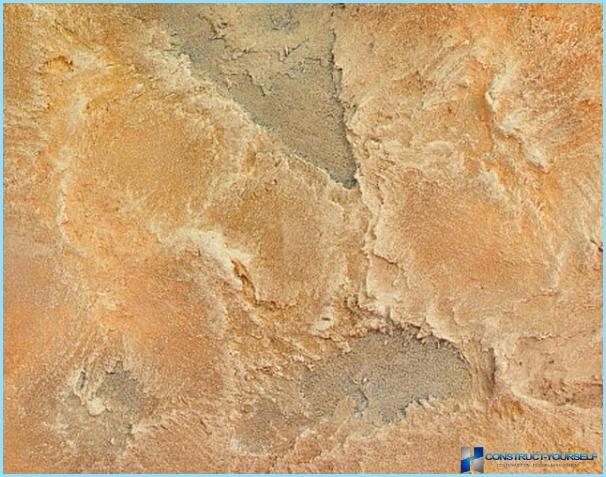
What tools are needed for textured blend ↑
Without the use of special tools to achieve the desired result – a beautiful texture not to.
- Plastering trowel guarantees the generation of simple textures, and highly artistic bas-reliefs.
- The brush helps to get a stylish texture.
- Spanish brush needed for artificial aging of the treated surface.
- Notched putty knife mimics the texture of wood.
- Biaxially textured cushion is required for the simultaneous formation of texture and colouring of the surface.
- Flat trowel removes the sharp corners, decorates the surface of style «woodworm».
- Synthetic or natural sea sponge is needed to give the wall a spotted texture.
The variety of the surfaces created with decorative plaster ↑
There are various types of textured plaster designed to decorate walls and ceilings:
- Structured (embossed) surface, with a layer thickness of 2-7 mm. It can be obtained by processing the plaster layers of different instruments.
- Textured surface. This coating is obtained when the multilayer deposition of the desired material on the wall (ceiling), the coating has a thickness of 1.2-1.5 mm.
- Variational plaster, suggesting separate acquisition of the filler and base. If desired, can be purchased separately marble, quartz, chips of different size, independently control the amount of filler.
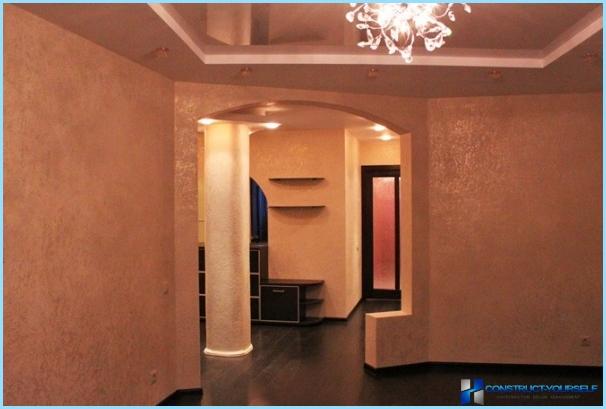
Relief plaster ↑
The cost of textured plaster is determined, the binder is introduced in the mixture.
Minimum cost have compositions based on mineral binders (gypsum, lime, cement).
Advantages of mineral fillers:
- resistance to high humidity
- excellent water vapor permeability.
The compositions are suitable for internal furnish of premises with high humidity, performing outdoor decorative facades.
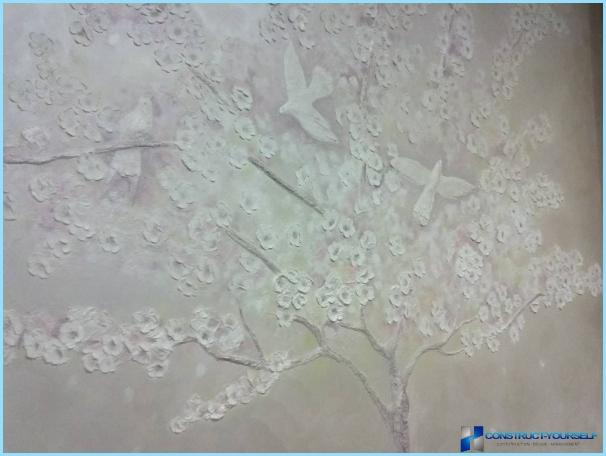
Cons cement plaster: rough texture.
This composition is not suitable for all interior options.
Polyurethane and epoxy plaster has a maximum resistance. Polyurethane putty ideal for any type of work.
Cons: the chemical origin of the materials used suggests a peculiar smell during operation, release of toxic substances at temperatures above 140 degrees, the high cost.
The plaster is water-based. The composition includes acrylic, polyvinyl acetate, styrene – acrylic. Such mixtures have good water vapor permeability, excellent ductility, resistance to the negative impact of ultraviolet radiation, high humidity.
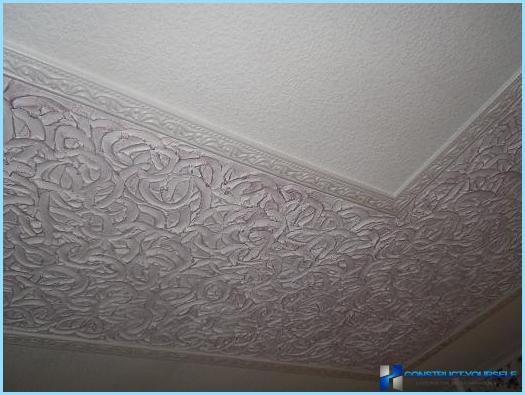
Fillers for textured plaster ↑
In the composition of the plaster mixes that are generated through the use of additional tools, it is assumed fine aggregate, do not affect the aesthetic appearance of the finished surface. If the plaster relief depends on the filler, it is important to make the correct choice.
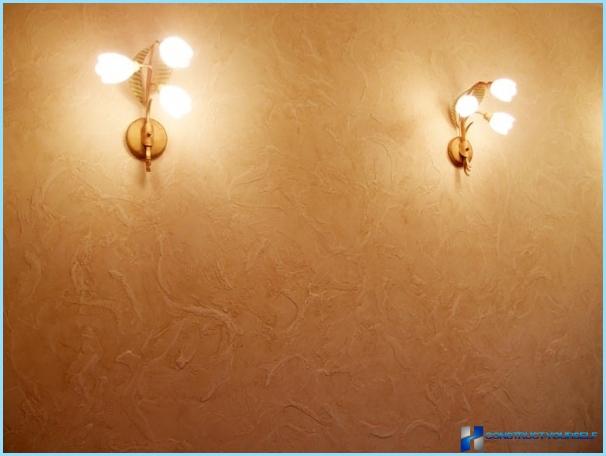
Groups of fillers:
- mineral components. These include marble, granite, quartz chips of different fractions. Widespread plaster «woodworm» with quartz filler.
- polymer granules.
- fillers of Sandstone give an imitation stone structures.
- silk or cellulose fibers
Textured decorative plaster without a major filler material, which gives unlimited possibilities for architects, artists, designers. It is suitable to design modern panel, with its help you perform the decoration of modern murals.
Create stucco pattern ↑
To create the beautiful pattern on textured plaster should:
- First, the surface is cleaned from old paint, dust, primed.
- Next, a layer of 3-5 mm on the wall is applied to the plaster mix, spread it over the surface.
- To give the plaster a certain terrain, you need a special tool. Depending on the depth of the depression, get a different terrain.
- Slightly dried surface to gently smooth, using a metal trowel.
- Dry wall is treated with fine emery paper, giving the surface a beautiful appearance.
- The process is painted textured plaster. To obtain unusual coverage, first cover the basis of dark color, then wipe with a rag coated with a light color. Similar «the trick» allows you to highlight the embossed texture, give the surface a unique look.
Plaster without texture – «Venetian style» ↑
These plasters help to simulate fading, marble, papyrus, fabric, small cracks. Of particular interest to designers causes Venetian plaster. A few centuries ago with the help of such technology decorated Royal palaces, in our time, the plaster is no texture used in the design of suburban apartments and town houses.
Venetian plaster consists of slaked lime, an aqueous emulsion, marble flour, caramel. The use of different colors in different layers allows to obtain the effect of depth. Apply this composition on flat and smooth wall, previously progruntovav mixture, which has a quartz filler. Each new layer is applied to the chaotic brush strokes not overlapping in full the previous layer. A new layer is applied only after complete drying of the previous layer. In the presence of defects on the plaster surface, to eliminate them you will need sandpaper.
Options textures ↑
By way of application and appearance are the following types of decorative plaster:
- Senator;
- coat;
- woodworm
Finish «under the coat» is a classic finish to homes of the 90-ies of the building. Basically the walls are plastered in grey color, pigments are added. In our days option «coats» assumes different colors, the inclusion of fillers of mineral or synthetic origin.
Classic finish «coat» found in homes built 30-40 years ago.
Often it is a wall of gray color without the addition of pigments. Modern «coat» characterized by the presence of color and fillers remineralise or mineral origin. For this plaster, a solution of the compounds in which there is white cement, sand, coloring pigment, water. A solution of medium consistency is poured into a special device, then sprayed on the wall (you can use a stiff brush or roller).
- Finish «Senator» presents the acrylic or silicone compounds, are added in 1-3 mm diameter grain filler. The composition is applied with a trowel, trowel, trowel. With a trowel make a certain figure, smooth all the sharp edges.
- Finish «woodworm» is additive in a mixture of marble or granite chips.
- Tuscan texture making the surface of walls of the village, the possibility of masking significant defects. Work is performed with the use of a trowel or an ordinary household knife. This texture is used in Mediterranean or Provencal interiors.
- «Las» – lace textured plaster, building on the wall of conventional construction with a brush pressed against the surface. After drying the plaster, the tops break off.
- Coated fabric with original mother of pearl particles creates the effect of shimmering silk. This option is perfect for getting original and stylish interior of premises with high humidity. Introduction of tinting pastes allows to obtain the desired shade.
Coating feature «under the fabric» ↑
- good adhesion to brick, asbestos cement, plaster, gypsum surfaces.
- high moisture resistance, excellent opacity (2 coats is sufficient to obtain the desired texture).
- easy maintenance.
Such coverage is offered by the manufacturer in five basic colors: gold, garnet, pearl, silver, white color.
Conclusion ↑
Correctly matched textured mixture will give the interior refinement and sophistication, will help disguise the defects existing on the surface. In accordance with instructions specified by the manufacturer of dry mixes on the package, you can make unusual textured structure with his own hands even from putty.

